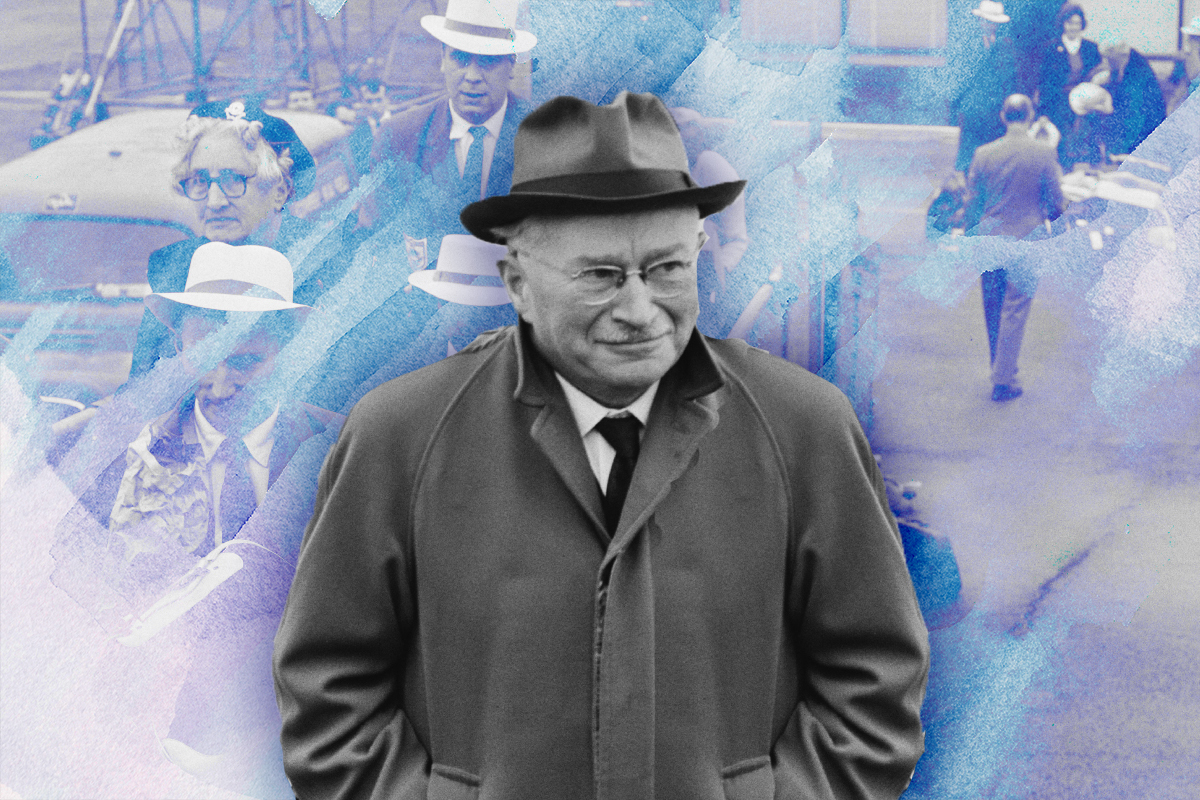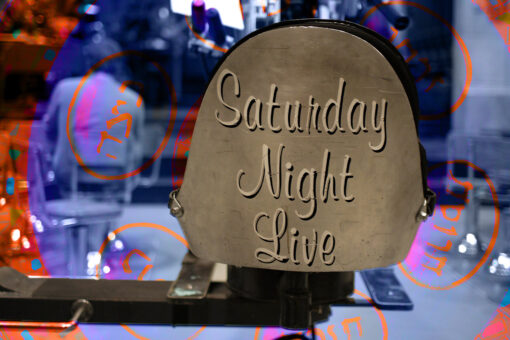On August 24, one of the world’s greatest sporting events will officially begin — the 2020 Tokyo Paralympic Games. Much like the Tokyo Olympic Games, there are plenty of Jewish athletes to support, like emerging track and field star Ezra Frech and veteran swimmer Matt Levy.
But unlike the Olympic Games, the Paralympics has incredibly inspiring Jewish origins, thanks to its founder, Sir Ludwig Guttmann.
Guttmann was born on July 3, 1899 in Tost, Germany (now Toszek, Poland) to a German Jewish family. In 1917, while working as a volunteer in a hospital for coal miners, Guttmann first encountered a patient with a spinal injury and paraplegia. At the time, paraplegia was effectively a death sentence; unfortunately, this proved true for the young coal miner Guttmann met in the hospital. However, the memory of this patient deeply impacted Guttmann and was truly a blessing.
Just a year later, Guttmann began training in medicine at the University of Breslau before transferring to the University of Freiburg in 1919, where he graduated with his Doctorate of Medicine in 1924. While at Freiburg, Dr. Guttmann also became an active member of a Jewish fraternity, whose goal was to stop the spread of antisemitism in universities. Eventually, the fraternity also became a center for physical activity and fitness so that “nobody needed to be ashamed of being a Jew.”
By the 1930s, Guttmann was working as a neurosurgeon at the Wenzel Hancke hospital in Breslau (now Wrocław, Poland) as a lecturer in the university, and as an assistant to Otfrid Foerster, a pioneer of neurosurgery. Dr. Guttmann was on track to be the next big German neurologist — until the rise of Nazi Germany. In 1935 Germany passed the Nuremberg Laws which, among other antisemitic acts, prohibited Jews from practicing medicine. Dr. Guttmann was expelled from his university appointment, fired from his job at the hospital, stripped of the title of “Doctor,” and was assigned to work at the Breslau Jewish Hospital.
Not long after, Kristallnacht happened.
“On the 9th of November I took my car and went to the synagogue,” Dr. Guttmann remembered later. “And there, the whole thing was surrounded by hundreds of people, burning, and SS men playing football with prayer books. I stood there and realized that my tears were running down. But I became quite determined to help persecuted people.”
That evening, 64 people came to the hospital seeking refuge from the pogrom and the Gestapo. Dr. Guttmann admitted them all. The next morning he was called down to the hospital by the SS.
“I went to the hospital and there were three SS officers sitting there,” Dr. Guttmann recounted. “‘Sixty-four people were admitted. How can you explain this?’ I discussed every case, and of course I invented all kinds of diagnoses, you see. Out of the 64 people, I saved 60.”
Despite his courage, Dr. Guttmann and his family were not safe in Germany either. By 1939, avenues of escape were quickly closing, but Dr. Guttmann was given a rare opportunity: The Nazis reinstated his passport and ordered him to travel to Portugal to treat a friend of the Portuguese dictator. With his family in tow, Dr. Guttmann traveled there, with his return trip to Germany scheduled through England. The Council for Assisting Refugee Academics anticipated his arrival and arranged for Dr. Guttmann and his family to stay in the United Kingdom. On March 14, 1939, the family arrived in Oxford, England, and in 1945 Dr. Guttmann became a naturalized citizen of the United Kingdom.
In England, Dr. Guttmann was able to continue his spinal injury research at the Radcliffe Infirmary, and later was asked to establish and direct the Spinal Injuries Centre at the Stoke Mandeville Hospital. Not only was the center revolutionary as the first specialist unit in the United Kingdom for spinal injuries, but it’s also where Dr. Guttmann pioneered treatment and rehabilitation for tetraplegic and paraplegic patients. At the time, the mortality rate of paralyzed patients was still incredibly high due to infections caused by bed sores.
Dr. Guttmann’s answer to this was simple yet determined care: Every two hours patients were turned onto their sides to prevent bed sores. Through this treatment, which Dr. Guttmann often administered himself, patients with paraplegia lived.
The next step was creating rehabilitation programs so paraplegic patients could grow their self-esteem and feel like the worthy members of society they were. Dr. Guttmann also had an answer for this.
“It occurred to me that it would have been a serious omission not to include sport in the rehabilitation of handicapped people,” he said. “That was probably one of the best thoughts I have ever had as a medical man.”
On July 29, 1948, the first Stoke Mandeville Games began on the same day as the opening for the London Summer Olympics. These games consisted of disabled war veterans, all of whom were in wheelchairs, competing in archery. The event was held annually and, in 1952, a team of paraplegic Dutch servicemen traveled to England to compete in the first international Stoke Mandeville Games.
In 1960, for the first time, the International Stoke Mandeville Games were held in Rome, Italy, alongside the Olympic Games. These games are now recognized as the first Paralympic Games. (Note: the term “Paralympics” refers to the fact that they are parallel to the Olympics and was retroactively recognized by the International Olympic Committee in 1984.) In Rome, 400 athletes competed, representing 23 countries and a wide range of disabilities. After 1960, the Paralympics moved to being held every four years, and held their first Winter Games in 1976.
The incredible growth of the Paralympic Games over such a short period of time was not without challenges, however. In 1968, the Olympic host city, Mexico City, backed out of hosting the Paralympic Games. Yet, Dr. Guttmann was determined to continue on with the Games, and he accepted an invitation from the Israeli government to hold them in Ramat Gan, near Tel Aviv. The opening ceremony was held in the stadium of Hebrew University in Jerusalem on November 4, 1968 to a crowd of nearly 10,000 spectators.
The Paralympics also had to change venues in 1980 when the Soviet Union refused to host them alongside the Moscow Olympic Games. Notably, when questioned on their refusal, a Soviet official told a journalist that there were no disabled people in the entire Soviet Union. Instead, the Paralympics were held in Arnhem, Netherlands, in 1980. Since the 1988 Summer Games in Seoul and the 1992 Winter Games in Albertville, France, the Paralympic Games and Olympic Games have been held in the same cities and venues.
In addition to his work at Stoke Mandeville and with the Paralympic Games, Dr. Guttmann founded the International Medical Society of Paraplegia (now the International Spinal Cord Society), serving as the President until 1970, and the British Sports Association for the Disabled (now the English Federation of Disability Sport). He was also a longstanding member of the Association for Jewish Refugees. For all that he accomplished in the field of neurology and for the disabled community, Ludwig Guttmann was appointed Commander of the Order of the British Empire and knighted by Queen Elizabeth II in 1966.
On March 18, 1980, Dr. Ludwig Guttmann passed away. In spite of his immense loss, Dr. Guttmann’s legacy is entrenched in the Jewish principles of tikkun olam and pikuach nefesh. Needless to say, his work surpassed the Nazi eugenics which tried to wipe him, along with the Jewish and disabled communities, out.
The Tokyo Paralympic Games will be held on August 24, 2021 through September 5, 2021.



